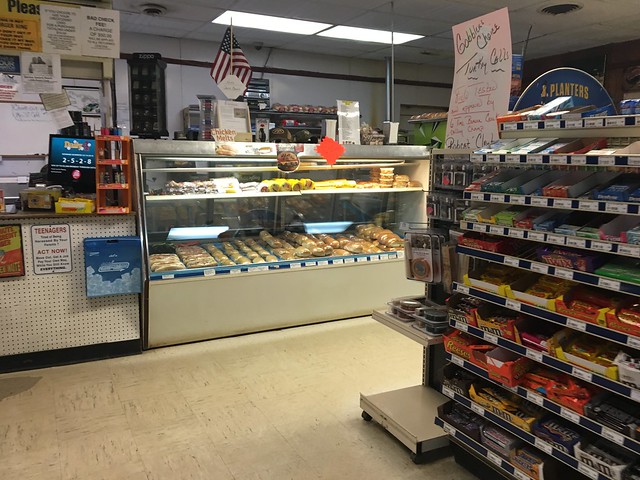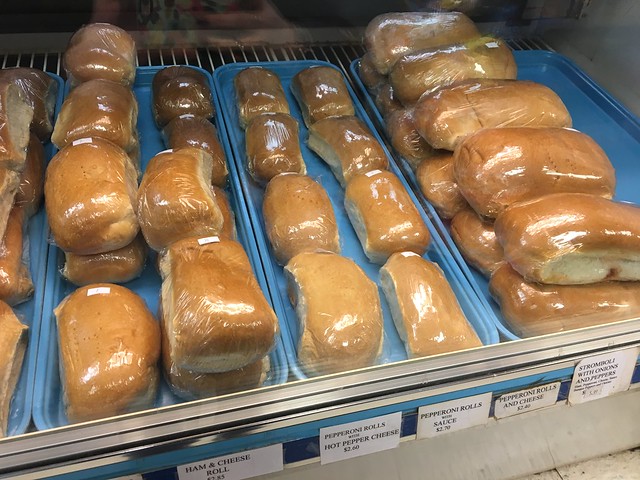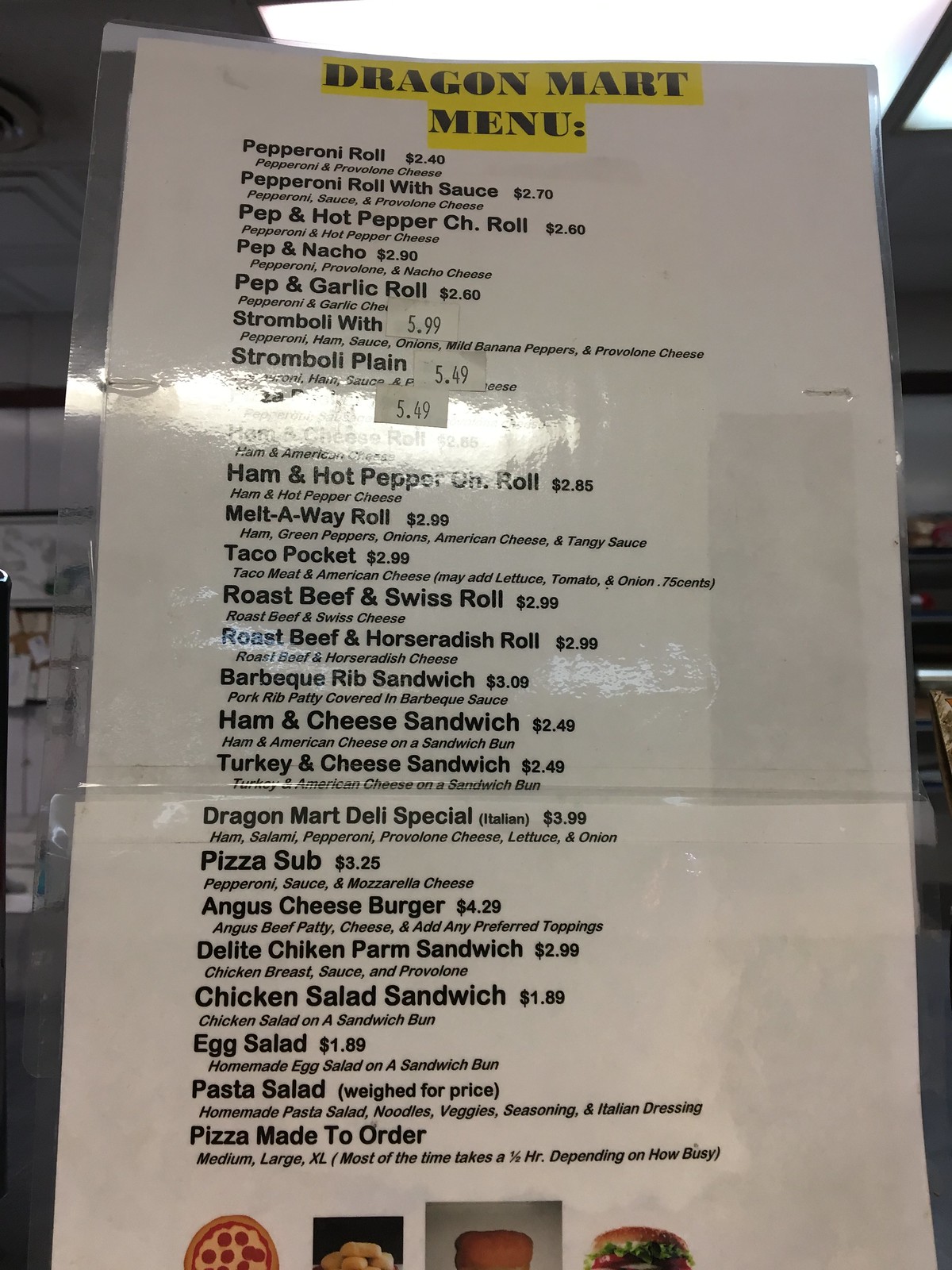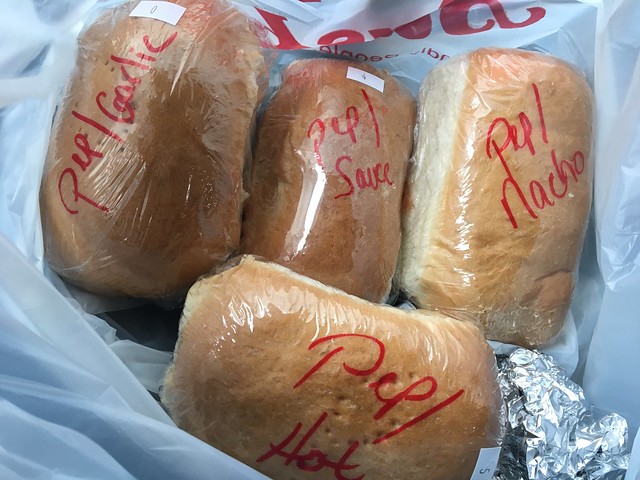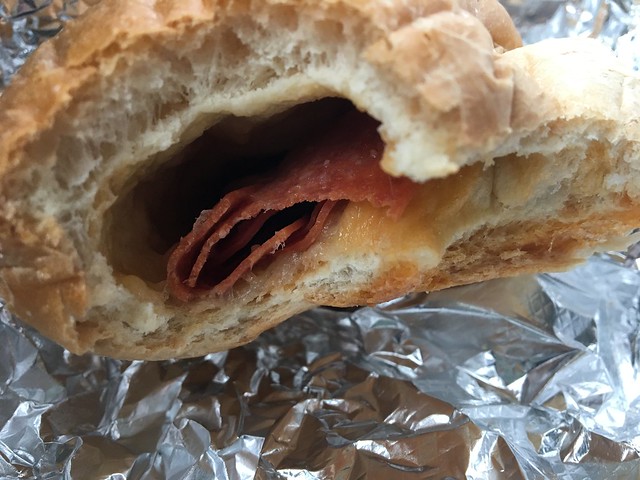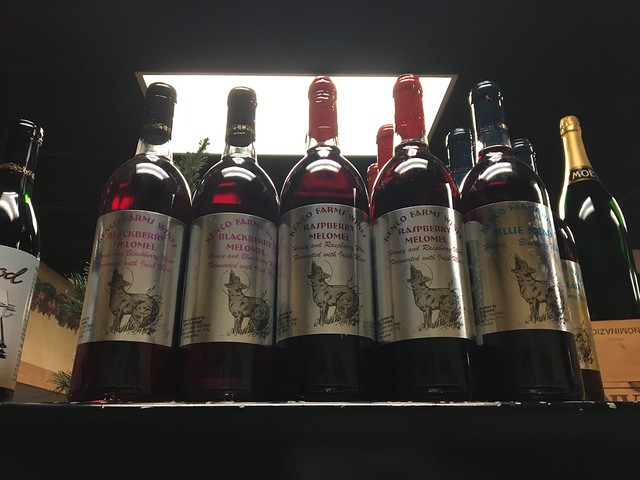
Kenco Farms Wines sells a very sweet wine, which is actually mead. I've tried this at various festivals over the years, but realized they don't do tastings/tours so I needed to find a bottle to add to my collection.
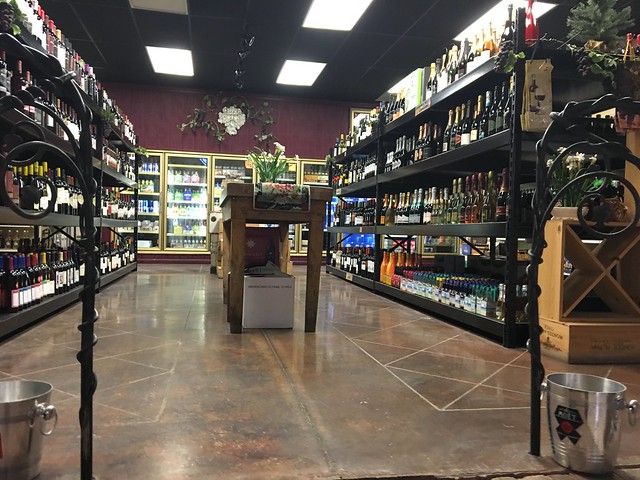 They have a blackberry melomel, blueberry melomel, raspberry melomel, cyster, and blue mead available for sale at The Spirit Shoppe in Nutter Fort.
They have a blackberry melomel, blueberry melomel, raspberry melomel, cyster, and blue mead available for sale at The Spirit Shoppe in Nutter Fort.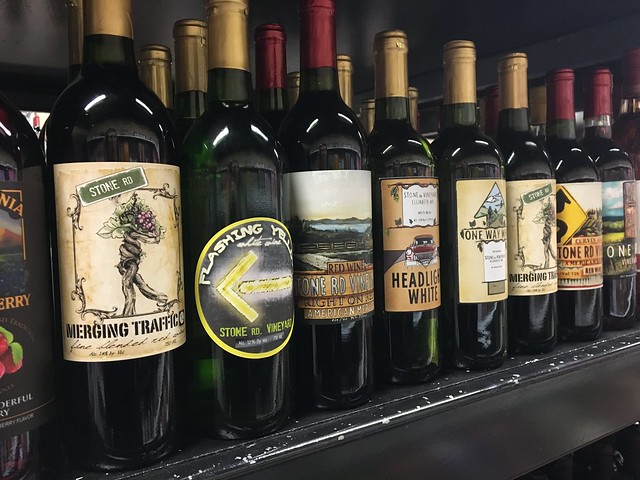
The Spirit Shoppe also has a variety of West Virginia wines that you don't see everywhere, like Stoneroad Vineyard wines.
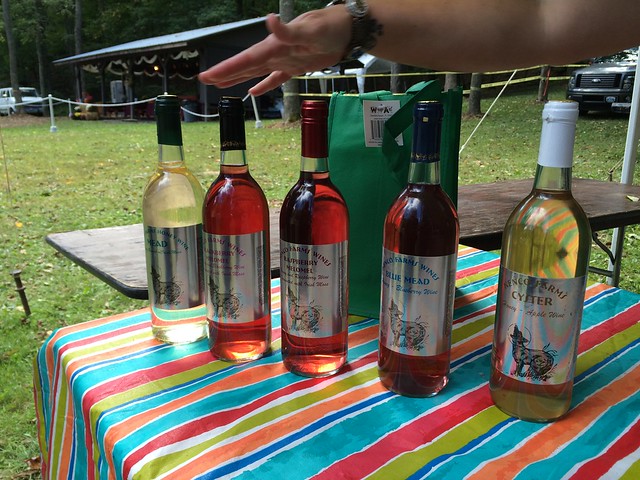
Above is from a wine & jazz festival.
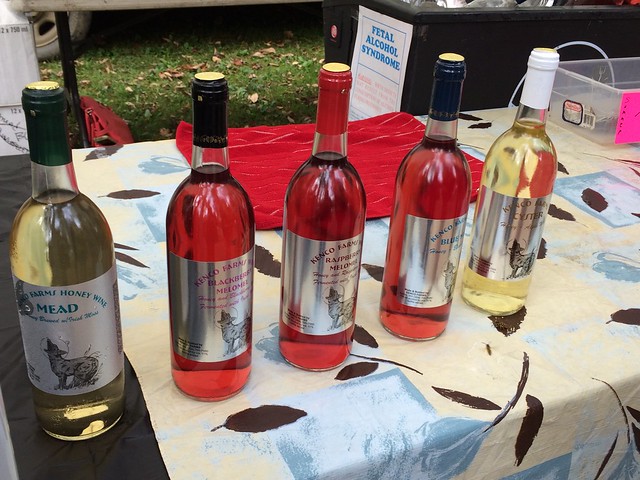
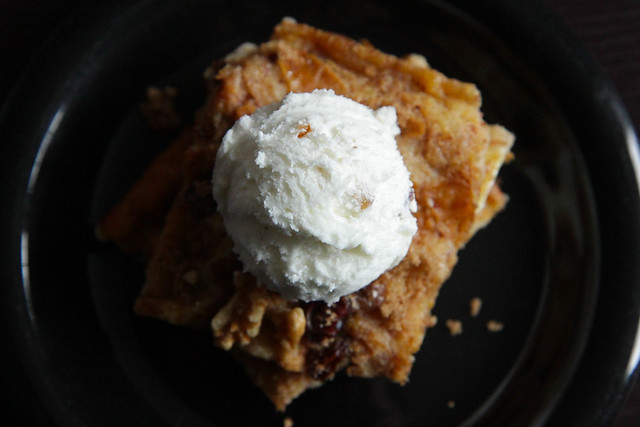
My latest column in the Charleston Gazette-Mail:
Some things are just an acquired taste — often due to nostalgia or developed via repeated exposure. Beans and cornbread. Dark chocolate. Beer.
That can probably be applied to many Appalachian foods. But, because I grew up eating them, I knew no different. Especially in sixth grade.
For a class project, I had been working on a genealogy report, where I traced my family back 13 generations until I ran out of documents in 1863 — when West Virginia wasn’t yet a state.
After months of poring over census records, birth records, death records and marriage licenses at the local courthouse, the day finally came to celebrate the diversity of the class, and everyone brought a traditional dish from his or her culture. I was tickled to bring the Nelson family’s famous bread pudding.
Bread pudding was a treat for my family. We baked a batch for special occasions, and every Nelson woman competed each year at my family reunion to see who could win the coveted title of best bread pudding.
It was never a contest, though, because Aunt Pat always took home top honors with her family recipe that likely dated back to when our ancestors emigrated from England.
But you know who wasn’t tickled? A bunch of picky 12-year-olds who turn their noses up at raisins and a congealed mass of stale bread.
Among a buffet of pizzas, pastas and mini-calzones from the kids with Italian heritage, my boring bread pudding remained untouched. Not. One. Bite.
It was a tragic moment for me — a young girl excited to share a piece of her culture through food. It wasn’t just any dessert. It was one that had been lovingly perfected over generations, integrated into important family events and adapted to fit ingredients we had readily available.
Appalachian cuisine is special in that the dishes are rooted in place and draw on our heritage.
Bread pudding exists in many different forms and cultures around the world. In the Philippines, they add bananas. In Canada, maple syrup. In West Virginia, it’s often made with dried apples from a summer harvest or hearty raisins. And memories.
That experience helped plant the seed for learning how food plays an important role in our culture. Appalachian cuisine may be difficult to define, but for me, it’s those meals that have stories associated with them and draw on the place we’re from.
For me, there’s nothing more Appalachian than bread pudding that has incorporated local ingredients that were available and developed by Nelson hands over many generations.
These experiences, memories, cultures — and food — are like blood running through my veins. They make up who I am. And part of who I am? Bread pudding connoisseur.
What is your Appalachian blood type?
Some things are just an acquired taste — often due to nostalgia or developed via repeated exposure. Beans and cornbread. Dark chocolate. Beer.
That can probably be applied to many Appalachian foods. But, because I grew up eating them, I knew no different. Especially in sixth grade.
For a class project, I had been working on a genealogy report, where I traced my family back 13 generations until I ran out of documents in 1863 — when West Virginia wasn’t yet a state.
After months of poring over census records, birth records, death records and marriage licenses at the local courthouse, the day finally came to celebrate the diversity of the class, and everyone brought a traditional dish from his or her culture. I was tickled to bring the Nelson family’s famous bread pudding.
Bread pudding was a treat for my family. We baked a batch for special occasions, and every Nelson woman competed each year at my family reunion to see who could win the coveted title of best bread pudding.
It was never a contest, though, because Aunt Pat always took home top honors with her family recipe that likely dated back to when our ancestors emigrated from England.
But you know who wasn’t tickled? A bunch of picky 12-year-olds who turn their noses up at raisins and a congealed mass of stale bread.
Among a buffet of pizzas, pastas and mini-calzones from the kids with Italian heritage, my boring bread pudding remained untouched. Not. One. Bite.
It was a tragic moment for me — a young girl excited to share a piece of her culture through food. It wasn’t just any dessert. It was one that had been lovingly perfected over generations, integrated into important family events and adapted to fit ingredients we had readily available.
Appalachian cuisine is special in that the dishes are rooted in place and draw on our heritage.
Bread pudding exists in many different forms and cultures around the world. In the Philippines, they add bananas. In Canada, maple syrup. In West Virginia, it’s often made with dried apples from a summer harvest or hearty raisins. And memories.
That experience helped plant the seed for learning how food plays an important role in our culture. Appalachian cuisine may be difficult to define, but for me, it’s those meals that have stories associated with them and draw on the place we’re from.
For me, there’s nothing more Appalachian than bread pudding that has incorporated local ingredients that were available and developed by Nelson hands over many generations.
These experiences, memories, cultures — and food — are like blood running through my veins. They make up who I am. And part of who I am? Bread pudding connoisseur.
What is your Appalachian blood type?
Aunt Pat’s Nelson Family Bread Pudding
This recipe for bread pudding was the award-winning dessert found at every Nelson family reunion. My Great Aunt Pat, the family matriarch, crafted this dish with love and perfected the recipe over many years. Her special touch included topping the bread pudding with brown sugar and raisins and using sweetened condensed milk. Here’s to you, Aunt Pat!
2 cups milk
4 cups dry bread, torn in pieces
¼ cup melted butter
½ cup sugar
2 eggs, slightly beaten
¼ teaspoon salt
½ cup seeded raisins
1 teaspoon cinnamon
sprinkle of brown sugar
handful of pecans
Butter a 1 ½-quart casserole dish and set aside.
Heat milk to scalding and pour over bread.
Lightly mix, then allow to cool.
Add remaining ingredients, stir well and pour into casserole dish.
Bake at 350 degrees for 40 to 50 minutes or until knife inserted in center comes out clean.
Serve warm, topped with a scoop of vanilla ice cream or drizzle of caramel.
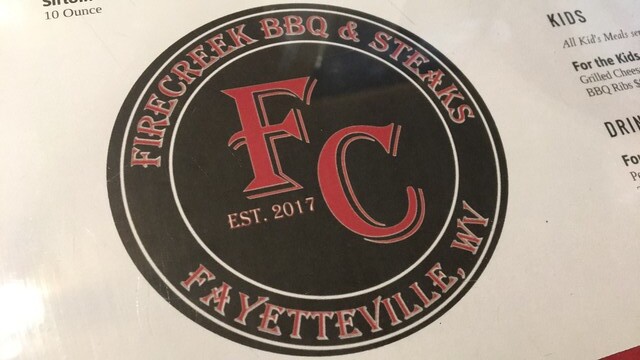
Firecreek BBQ & Steaks is a new restaurant in Fayetteville serving up bbq classic - with a side of steak.
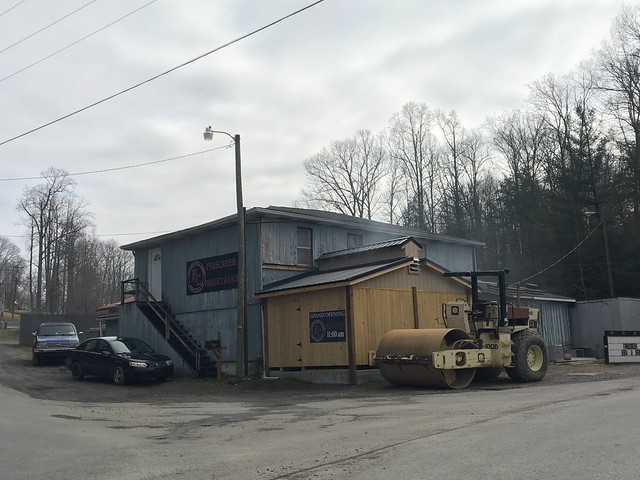
Firecreek BBQ & Steaks took over the space of the former Dirty Ernie's Rib Pit.
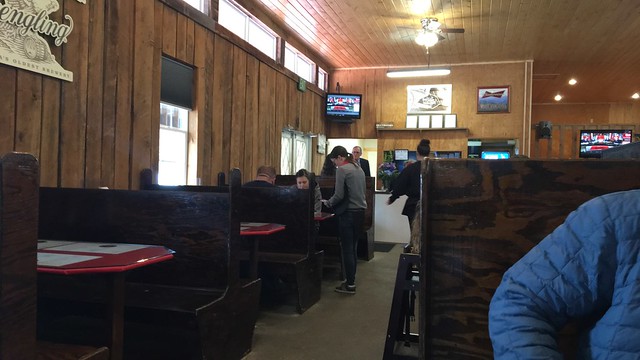
Inside, it's wood everywhere - walls, ceiling, booths.
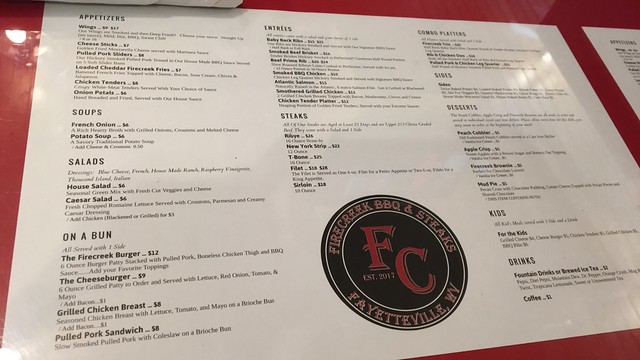
The menus were placed beneath glass on the table, which was pretty clever.
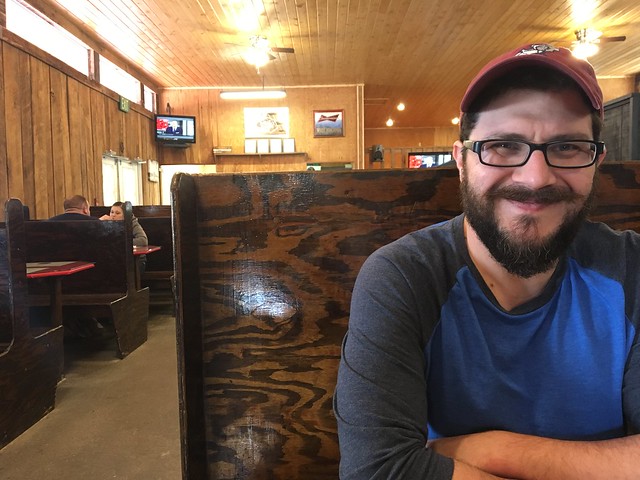
Hi, Bill!
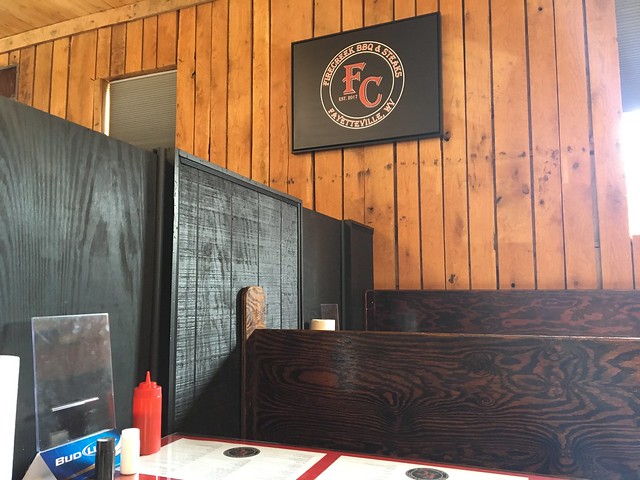
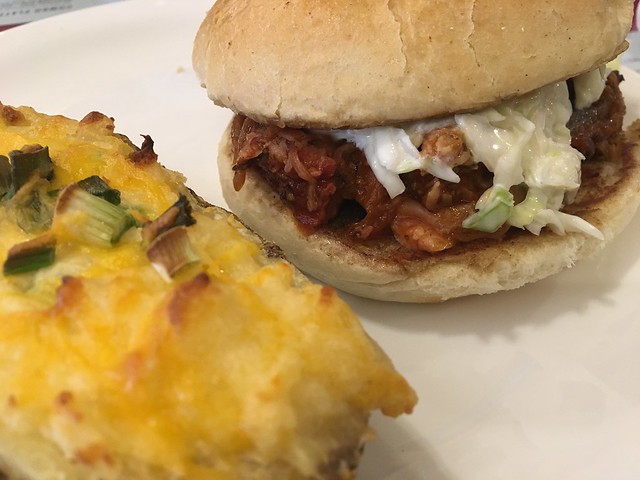
Pulled pork sandwich on brioche with slaw and a side of twice baked potato.
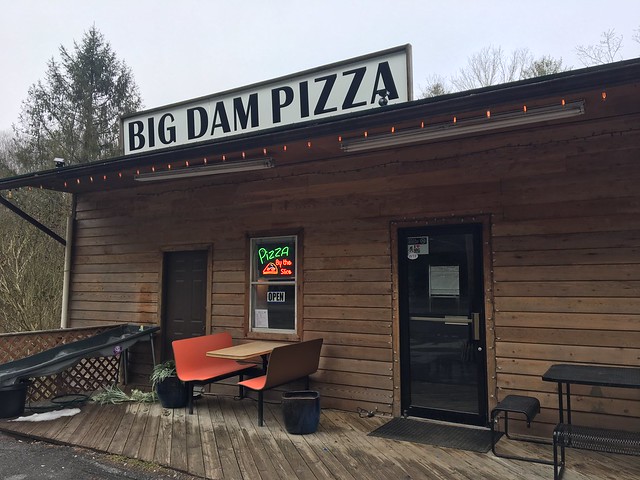
Big Dam Pizza is a relatively new pizza joint in Fayetteville that is known for, well, some pretty damn big pizza.

The space is not huge - despite the size of the pies - but it wasn't busy.

The restaurant is decorated with images of dams.
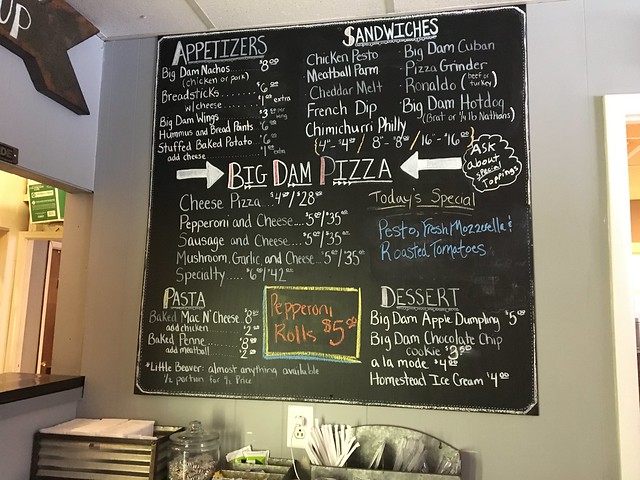
The menu features their signature huge slices, as well as some other yummy sounding items - pepperoni rolls, mac & cheese, Big Dam Hotdog, Big Dam Cuban, wings and hummus.
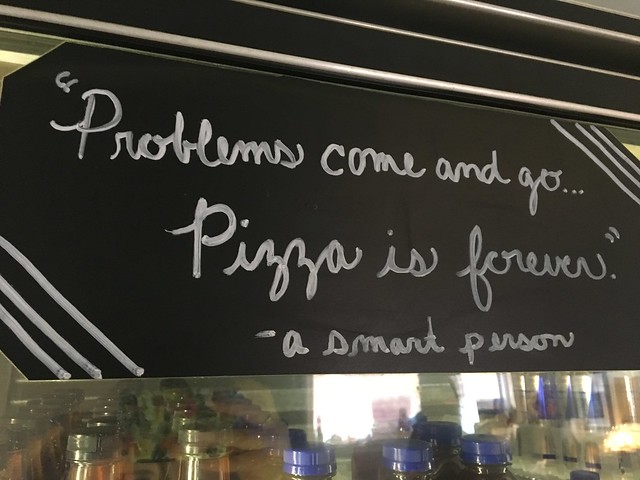
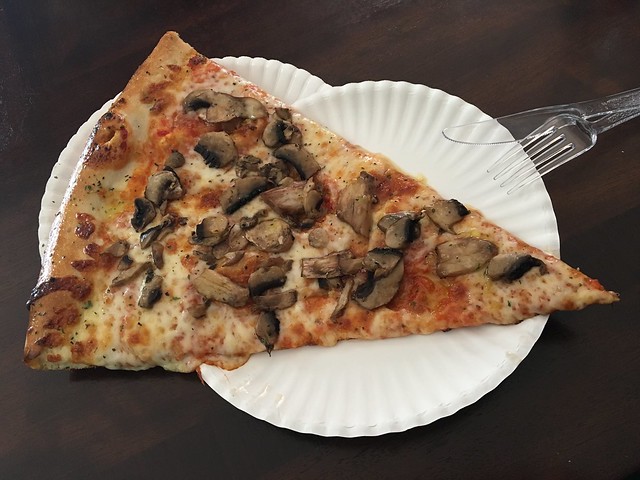
Slice with mushrooms and garlic - easily as big as two slices! Maybe three.
All work property of Candace Nelson. Powered by Blogger.


